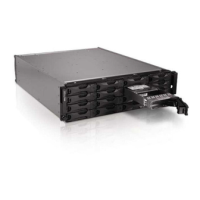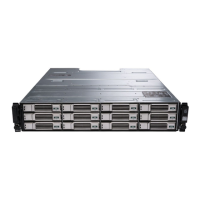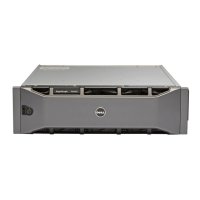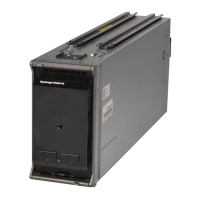PS6500 Hardware Maintenance Maintaining Control Modules
3-3
Identifying Control Module Failures
You can identify a failure in a control module by:
• LEDs. If a control module fails, the control module hardware status LED on the array is orange or flashing
orange, and the LEDs on the control module indicate the failure as described in Interpreting Control Module
LEDs on page 3-1.
• Messages. A message on the LCD panel (located behind the bezel), on the console, in the event log, or in the
Group Manager GUI Alarms panel describes a control module failure.
• Group Manager GUI and CLI output. The Member Controllers window or the
member select show
controllers
command output shows the control module status not installed.
Understanding Failover Behavior
Only one control module is active (serving network traffic) at one time. Each control module includes a battery-
backed write cache for storing recently-used data. For redundancy, the cache on the secondary control module
mirrors the data that is stored in the cache on the active control module.
Each control module has four ports: Ethernet 0, Ethernet 1, Ethernet 2, and Ethernet 3. The active control module
can use a network interface only if there is a cable connected to the port on the active control module. Therefore,
you should connect a cable to the network interface port on each control module to make sure that both control
modules can access an interface.
A PS Series array provides two types of network failure protection:
• Network connection failover. If multiple network interfaces are configured and one network interface fails,
iSCSI initiators that were connected to the failed interface can reconnect to the group IP address and be
redirected to a functioning interface. For example, if Ethernet 0 and Ethernet 1 are connected to a network, and
Ethernet 0 becomes disabled, initiators that were connected to Ethernet 0 can be redirected to Ethernet 1.
• Control module failover. If the active control module fails, the secondary control module automatically takes
over and becomes active. Control module failover is transparent to applications, but iSCSI initiators must
reconnect to the group IP address. If both control modules fail, the array will not operate.
Replace a failed control module as soon as possible. Contact your PS Series support provider for a replacement.
Maintaining Control Module Firmware
A PS6500 array includes two control modules, each with a microSD card running the array firmware. You should
run the latest firmware version to take advantage of new product features and enhancements.
Caution: Both control modules must be running the same firmware version; otherwise, only one control module
will be functional. When you use the
update command procedure, both control modules are updated
to the same firmware version.
Group members should run the same firmware version; otherwise, only the functionality common to all versions
will be available in the group. See the PS Series Release Notes for information about mixed-firmware groups.
If you are upgrading a control module or replacing a failed microSD card, make sure to order the correct PS Series
firmware version. If you are replacing a failed control module, remove the microSD card from the failed control
module and install it in the replacement control module. This will make sure that you keep the correct firmware.
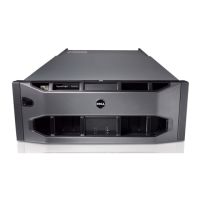
